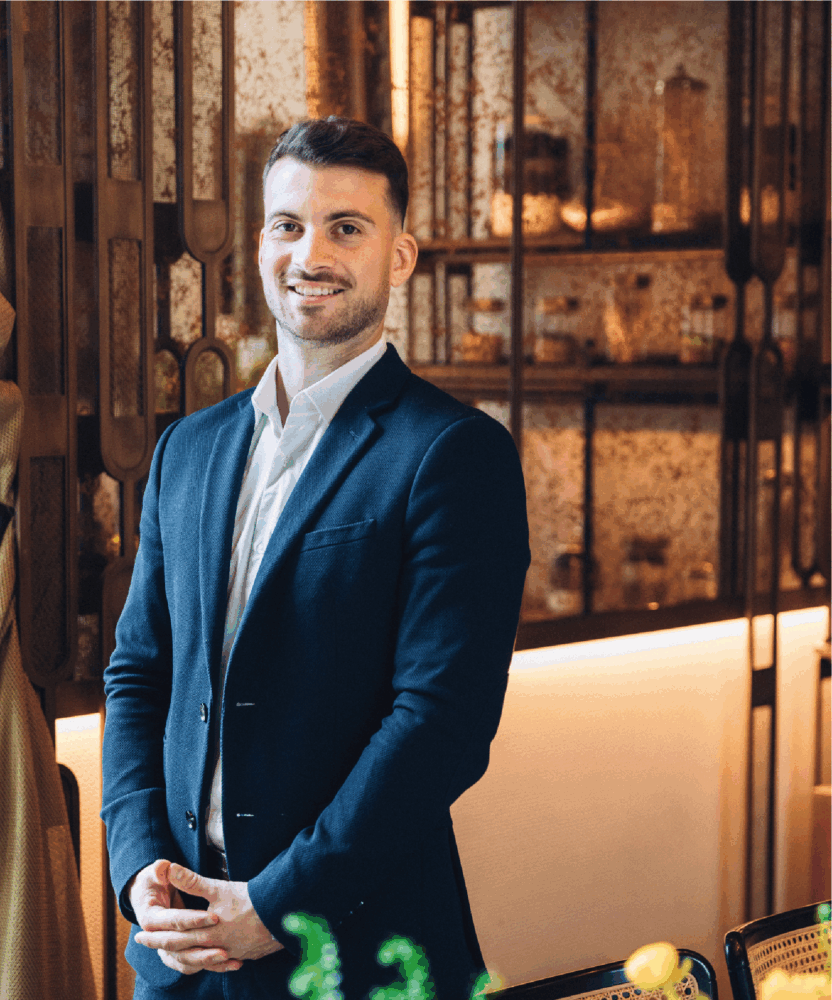Wine List
Grand Tasting : NV Yellow Label, 2018 La Grande Dame, NV Rose, 2015 La Grande Dame Rosé
Gala Dinner : 1995 Cave Privée, 1996 Cave Privée Rosé Double Magnum
Emmanuel Gouvernet – Winemaker of Veuve Clicquot
Between Provence and Camargue, in the heart of a land bathed in Mediterranean light, Emmanuel grew up in a family where taste and authenticity were passed down like a precious legacy: a grandfather who was a winemaker, a father who was both chef and butcher. From childhood, the vine, wine, and gastronomy became for him more than a passion – an obvious calling.
Driven by insatiable curiosity and a spirit of discovery, he traveled the world to explore renowned vineyards: Australia, Canada, Argentina, and, of course, France’s most celebrated regions such as Bordeaux. These journeys shaped his vision and deepened his intimate understanding of wine, balancing tradition with innovation.
A true entrepreneur at heart, Emmanuel founded his own companies in wine and event management, always guided by the desire to share and to celebrate. But it was in Champagne, at Veuve Clicquot, that he discovered the ideal place to unite all his passions. Here, he combines expertise, creativity, and precision in a craft where every detail matters.
Today, as a senior winemaker of this prestigious Maison, Emmanuel champions the French Art de Vivre, interpreting it as a subtle alliance between heritage and modernity, rigor and audacity, terroir and horizon.
Vineyard & History
Champagne is a protected region and wine style. In the past, many producers from other regions and countries labelled their sparkling wines ‘Champagne’ (and some countries still do) to share in the prestige of this French appellation. The Comité Interprofessionnel du Vin de Champagne (CIVC, now known as the Comité Champagne) has worked tirelessly to ensure that Champagne remains a traditional method sparkling wine from grapes grown within the appellation. Champagne and the styles it produces have long served as the model for traditional method sparkling wines around the world.
Veuve Clicquot’s vineyards are primarily located in the Champagne region’s most prestigious crus, including Grands and Premiers Crus—of which 95% of the Maison’s vines are classified, compared to just a quarter of the region’s total vineyard surface. Each plot’s grape variety is determined by assessing its soil, climate, and exposure. The vineyards are characterized by chalky soils, which provide excellent drainage and contribute to the signature minerality and freshness of Veuve Clicquot champagnes. This unique chalk subsoil maintains an ideal balance of acidity and fruit expression, fundamental to the Maison’s Pinot Noir-driven style. Gentle sloping hills further enhance the vines’ exposure to sunlight, ensuring optimal ripening.
Today, the Veuve Clicquot vineyard is comprised of 47% Chardonnay, 36% Pinot Noir, and 17% Meunier. The cellar, located in historic chalk quarries beneath Reims, benefits from consistent humidity and temperature, providing perfect aging conditions and reinforcing the mineral character of the wines. Since its foundation, the Maison has also built strong partnerships with fellow winegrowers in Champagne. These providers of grapes and still wines help ensure the consistency and quality that define Veuve Clicquot.
The vineyard estate itself has been gradually assembled since the early 19th century. Under the leadership of Madame Clicquot, the Maison began acquiring plots in key crus to guarantee control over grape quality and production standards. Over time, the estate expanded strategically, continually enhancing its vineyard portfolio while maintaining exceptional quality across its blends.
Madame Clicquot was also a true innovator whose vision transformed the Champagne industry. She invented the riddling (remuage) table to clarify wines, pioneered the first vintage champagne, and established one of the earliest commercial champagne brands. Her bold marketing techniques helped position the Maison as a global symbol of excellence. This spirit of innovation remains central to Veuve Clicquot’s savoir-faire today, combining meticulous grape selection, precise blending, and sustainable viticulture practices to uphold the Maison’s distinctive style.
Sustainability remains a cornerstone of Veuve Clicquot’s philosophy. Integrated pest management (lutte raisonnée) plays a key role, involving careful monitoring, preventive measures, and minimal intervention only when necessary. Beyond the vineyards, the Maison embraces circular economy principles, striving to minimize its environmental impact across production while preserving the craftsmanship and heritage that make its champagnes unique.


